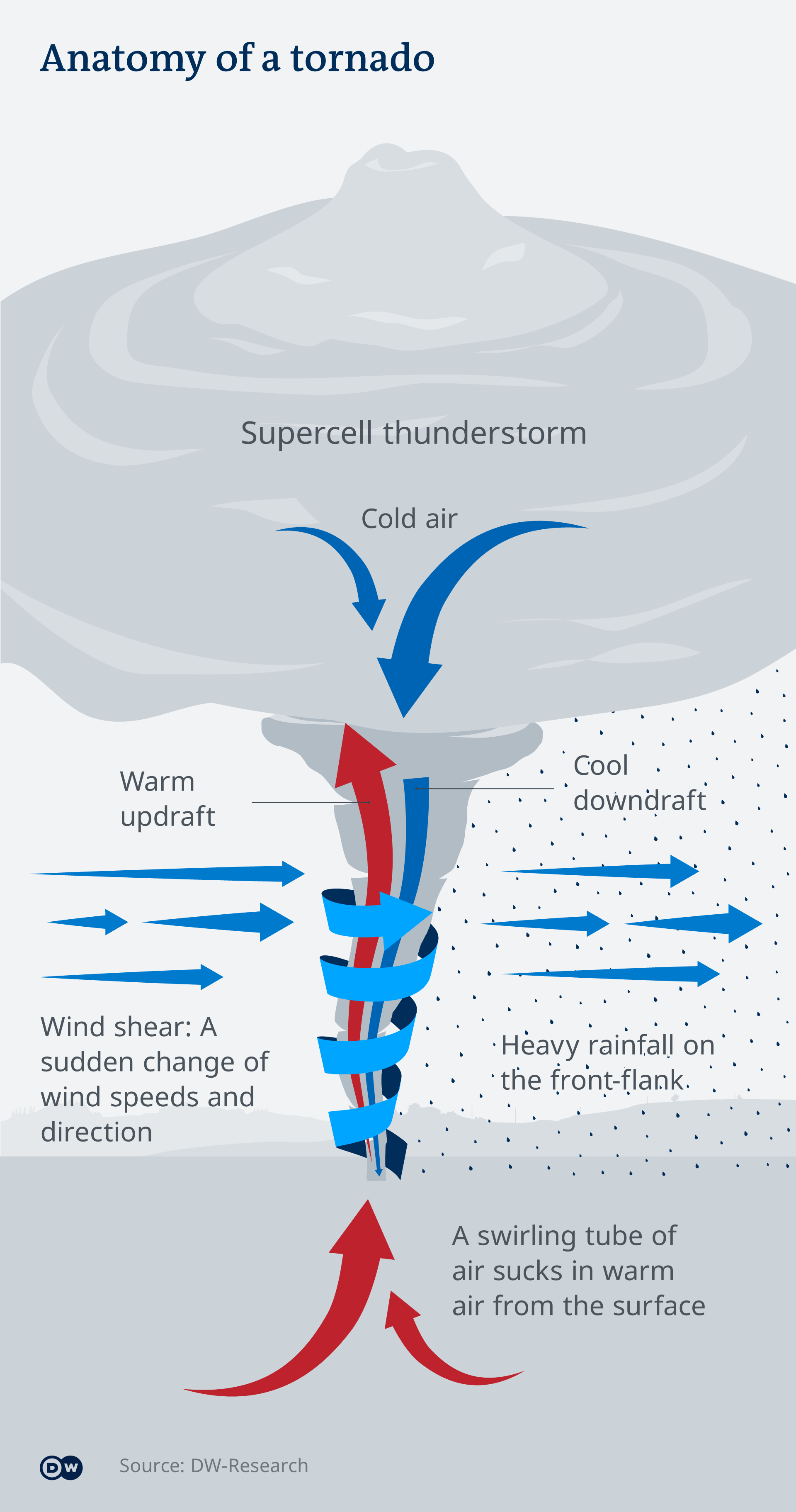How does a tornado form step by step?
Tornadoes are one of Mother Nature’s most violent and destructive phenomena. These swirling columns of air can cause immense damage, tearing through towns and leaving devastation in their wake. But how exactly do tornadoes form? In this article, we’ll explore the step-by-step process behind the creation of these powerful and often deadly storms.
Tornado formation begins with the development of a thunderstorm. Thunderstorms are created when warm, moist air rises rapidly and meets cooler air in the upper atmosphere. This collision of air masses sets the stage for the formation of a tornado. However, not all thunderstorms produce tornadoes. Certain conditions need to be present for the birth of these funnel-shaped vortexes.
The Ingredients for Tornado Formation
1. Moisture:
The first essential ingredient for tornado formation is moisture. A significant amount of moisture needs to be present in the lower atmosphere. This moisture-rich air provides the necessary fuel for the storm to develop and intensify.
2. Instability:
The second ingredient is atmospheric instability. This refers to the tendency of air to rise vertically when given a little nudge. In the case of tornado formation, warm air needs to be rapidly lifted upwards, triggering the initial development of a thunderstorm.
3. Wind Shear:
Wind shear, the third ingredient, is the variation in wind speed and direction with altitude. In tornado formation, wind shear is crucial as it creates a rotating motion within the thunderstorm. This rotation becomes the building block for the tornado.
Step-by-Step Formation Process
Step 1: Thunderstorm Development
The first phase of tornado formation begins when a thunderstorm develops. Warm, moist air rises rapidly into the cooler upper atmosphere, creating instability. This upward motion initiates the formation of towering cumulonimbus clouds.
Step 2: Updraft Strengthens
In the next step, the updraft of the thunderstorm intensifies. The air is drawn upwards, causing a rapid upward-moving column of air. This updraft creates an area of low pressure at the surface, which starts drawing in more warm, moist air from the surrounding environment.
Step 3: Formation of Wall Cloud
As warm air spirals upwards, it may begin to rotate horizontally. This rotational motion is a result of wind shear within the thunderstorm. As the updraft strengthens, the rotating area of air becomes more organized and may form a wall cloud, a large, lowering cloud that can often appear greenish or gray.
Step 4: Mesocyclone Development
The wall cloud serves as a focal point for further intensification of the rotating updraft. This rotating updraft is known as a mesocyclone. It is a critical stage in tornado formation, as it provides the necessary conditions for the creation of the tornado.
Step 5: Formation of the Tornado
In the final step, the mesocyclone continues to strengthen, and the rotating updraft tightens and elongates. As the air is further compressed, it speeds up, causing the development of a tornado funnel. The funnel descends from the base of the mesocyclone towards the ground, connecting the rotating column of air with the surface.
Step 6: Touchdown and Life Cycle
Once the funnel cloud touches the ground, it becomes a tornado, and its life cycle begins. Tornadoes can vary greatly in size, intensity, and length of time on the ground. Some tornadoes are short-lived and weak, while others can be long-lasting and devastating.
Frequently Asked Questions
Q: Can tornadoes happen at any time of the year?
A: While tornadoes can occur throughout the year, the peak tornado season varies depending on the region. In the United States, tornado activity is most common in the spring and early summer months.
Q: What is the Enhanced Fujita Scale?
A: The Enhanced Fujita Scale (EF Scale) is a system used to measure the intensity of tornadoes based on the damage they cause. It ranges from EF0 (weak) to EF5 (violent).
Q: How fast can tornadoes move?
A: Tornadoes can travel at various speeds. On average, tornadoes move at around 30 miles per hour, but they can reach speeds of up to 70 miles per hour or more.
Q: Can tornadoes be predicted in advance?
A: While meteorologists have made significant advancements in tornado detection and warning systems, accurately predicting specific tornadoes is still a challenge. However, advancements in technology have improved tornado warnings, providing people with more time to seek shelter.
Final Thoughts
Understanding how tornadoes form is essential for both weather enthusiasts and those living in tornado-prone areas. By understanding the step-by-step process behind tornado formation, we can better appreciate the power and unpredictability of these natural disasters. While tornadoes can be incredibly destructive, advancements in detection and warning systems continue to improve, helping us mitigate the risks and keep people safe. Stay informed, stay prepared, and stay safe!
